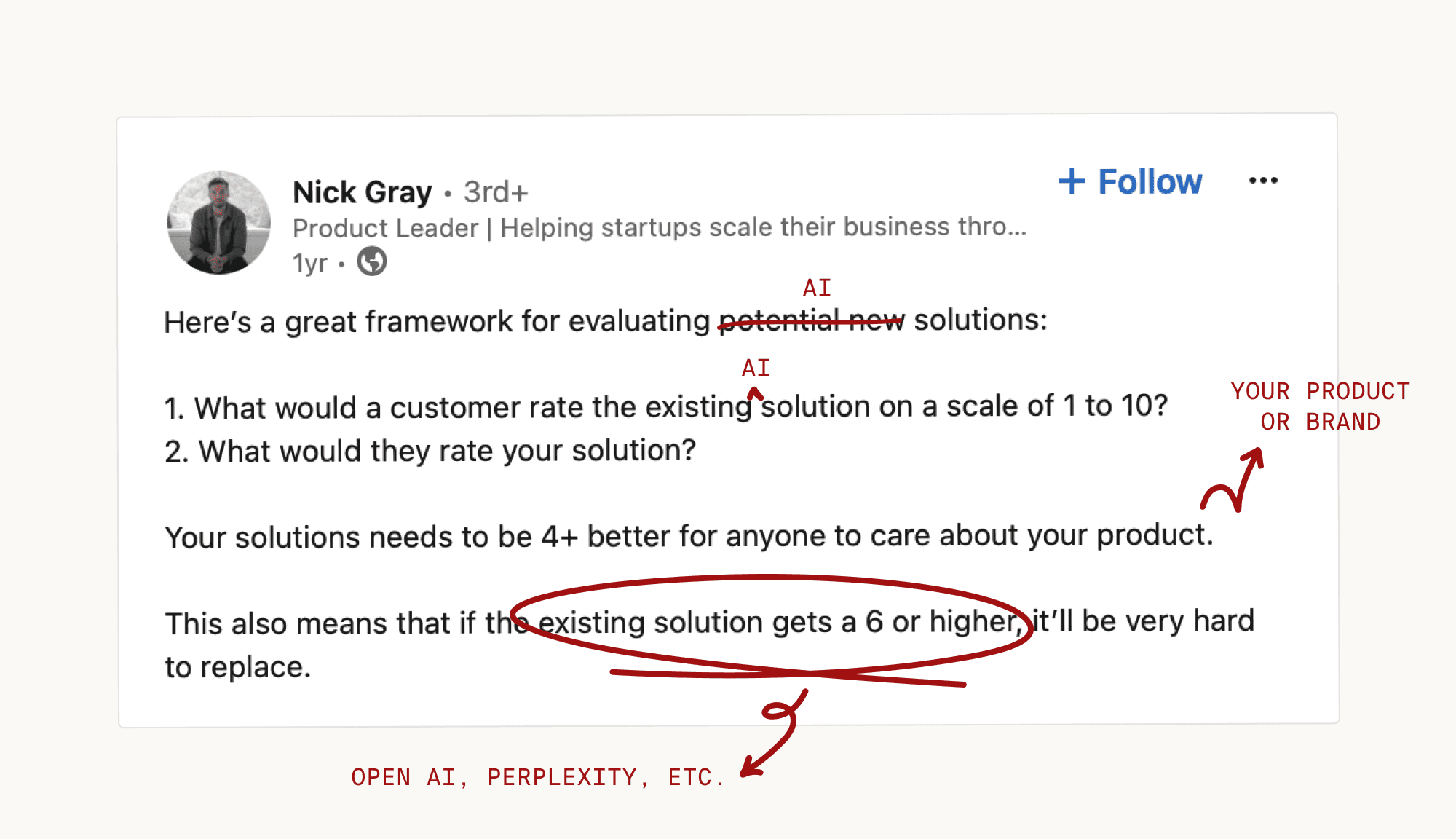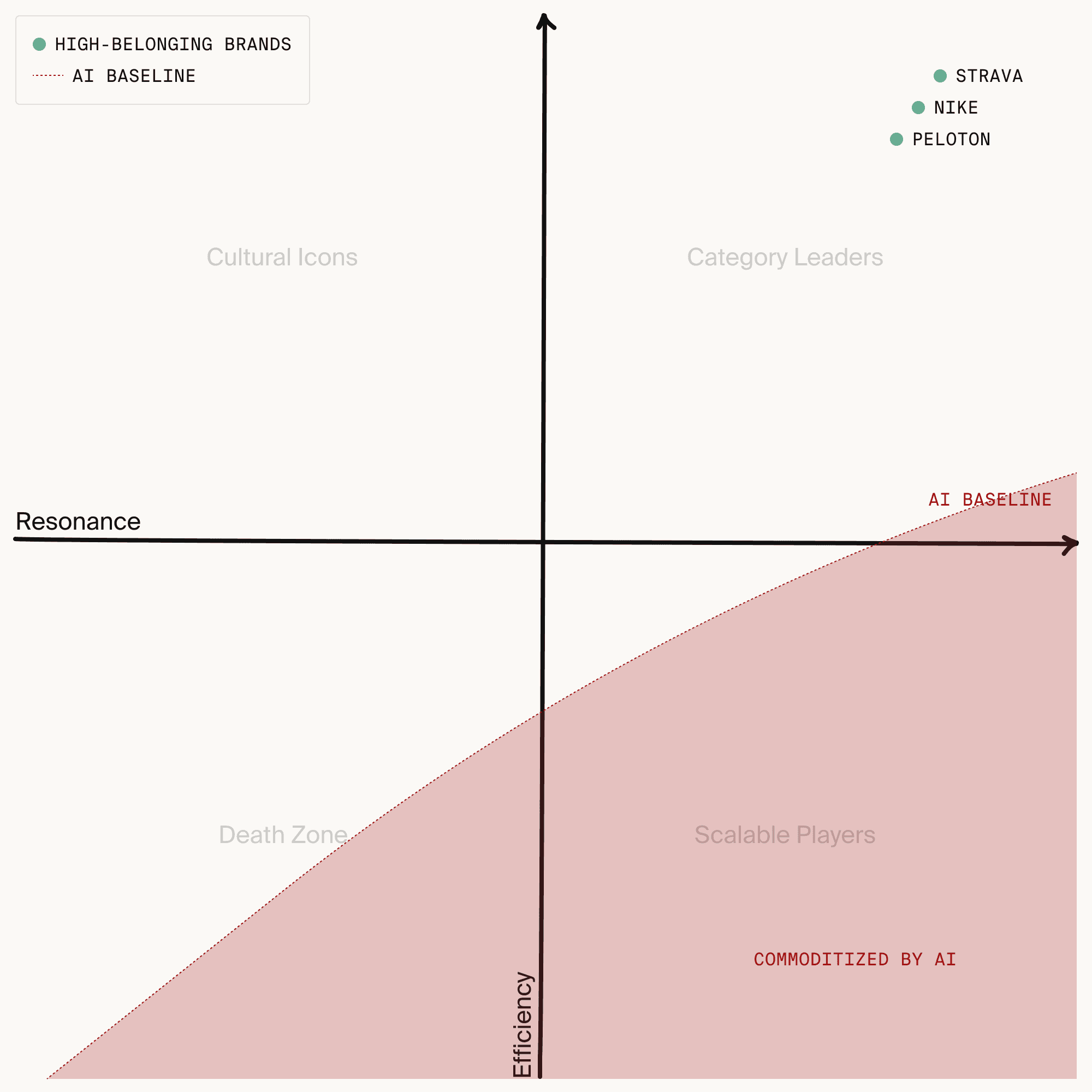blog
OpenAI is Your Next Competitor
AI giants like OpenAI and Perplexity are evolving into powerful gatekeepers for brands, shifting focus from efficiency and accuracy to resonance with audiences.
Part three
By Ed Landon
10.15.2024
There's an uncomfortable truth forming in AI: while everyone is enamored over the emergence of ChatGPT and Perplexity, they don't realize these AI giants are huge competitors that just parachuted into the market. They're forcing every brand to rethink their strategy. Why?
01
The New Gatekeepers
OpenAI and Perplexity aren't just tools – they're becoming the front door to every customer interaction. When a user asks ChatGPT to "find me the best running shoes," or tells Perplexity to "book my vacation," these AI agents won’t just provide information – (soon) they’ll execute. They compare, choose, and increasingly, complete the purchase. Your brand? It might just become a line item in an AI's decision matrix.
This isn't just about search results anymore. Perplexity's recent beta launch of a universal checkout system means they can execute entire transactions. They're not just suggesting products; they're becoming the primary interface through which customers interact with every brand. They're the new gatekeepers of customer relationships.
So now nearly every brand in the world just got a new competitor. What should tech leaders do?
The above is a play off of Clayton Christensen's seminal "Jobs to be Done" framework: it tells us that consumers don’t abandon their current solution unless a new one is dramatically better – typically 2-3x better. But here's the twist: customer needs have always operated on two axes: efficiency ("how easily can I get this done?") and what we used to call accuracy ("how well is this actually solved?").
But "accuracy" isn't quite right anymore. In a world where AI can generate perfectly serviceable solutions for almost any task, being "accurate" isn't enough. What matters now is resonance: how deeply your solution connects with your users' identity and aspirations.
02
From Product-Market fit to Market-Product fit
This is why we need to invert the old concept of Product-Market Fit.
In a pre-AI world, companies built products and searched for their market.
In a post-AI world, that playbook is obsolete.
When AI can efficiently build anything, success isn't about having a product looking for its community – it's about having a community that demands its own product.
What can I help you with today?
Consider a simple prompt: "Help me plan a workout routine."
Nike doesn't just create accurate workout plans; their market of aspiring athletes defines what a Nike workout must be - high-performance routines featuring elite athletes and Nike Run Club integration.
Peloton's community-obsessed market demands social features and live classes woven into every workout.
Strava's market of competitive outdoor enthusiasts shapes their offering into one focused on routes, records, and friendly rivalry.
Even Calm's mindfulness-seeking market transforms the same prompt into gentle, meditative movement.
03
Emerging from the Market
The future belongs to brands that understand this shift from user experience to user belonging. Your product can no longer compete on efficiency – AI has commoditized that. It can't compete on accuracy alone – AI is rapidly commoditizing that too.
The only sustainable advantage is resonance. Companies must build something that makes their tribe feel seen, understood, and belonging to something bigger than themselves. In a post-AI world, your product must emerge from your market's culture, not the other way around.
The winners won't be those who build the best products - AI can do that. The winners will be those who build the strongest niche communities, letting their market define their product.



